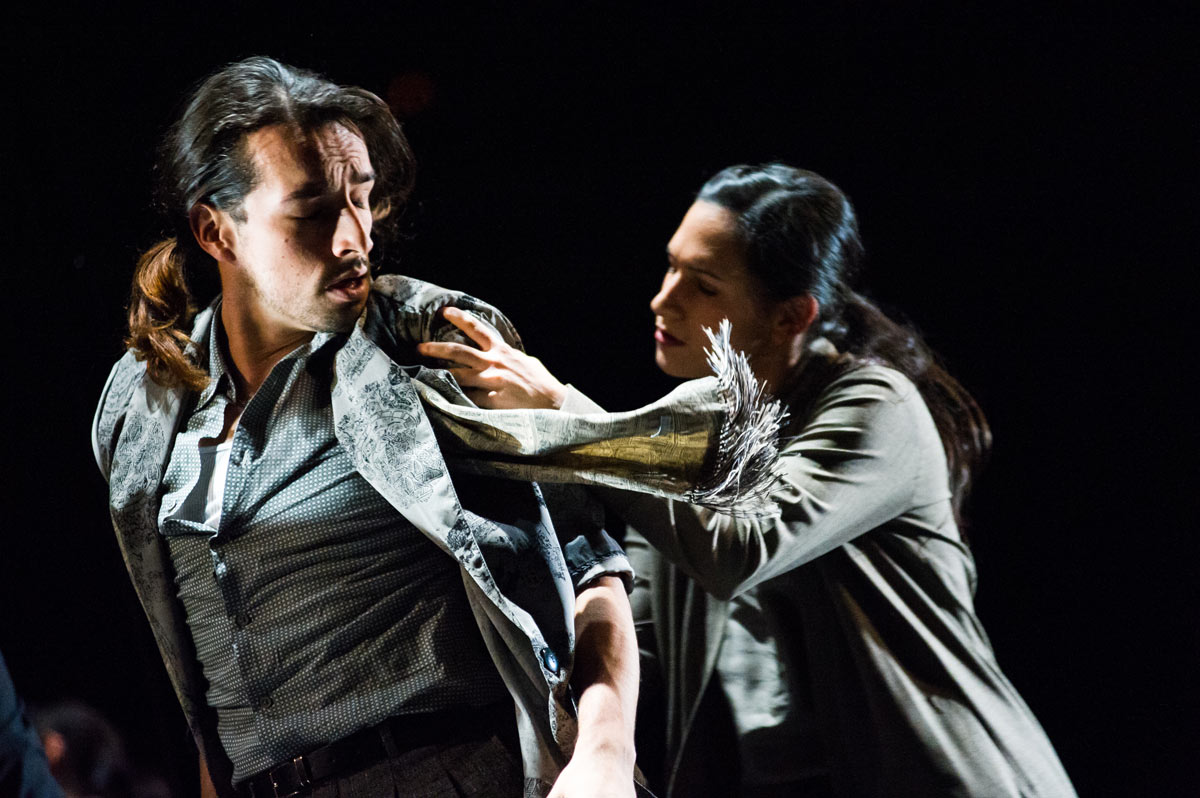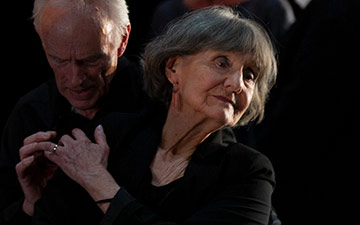
© Paula Lobo. (Click image for larger version)
Ballet Hispanico
If Walls Could Speak
New York, Apollo Theater
20 November 2015
www.ballethispanico.org
www.apollotheater.org
A sparse, small apartment contains much of the drama in Fernando Melo’s If Walls Could Speak, an evening-length premiere for Ballet Hispanico. Though the piece has its roots in Melo’s home country of Brazil, we as New Yorkers see ourselves in this apartment, mostly literally – a two-way mirror separates the apartment from the one beside it, and the entire audience is eerily reflected. But the work’s relatability largely ends there.
Vignettes paint quick portraits of people at their kitchen table – all lonely, anxious. At times, we see their neighbors behind the wall, similarly lonely. They get lost in one another’s reflections, moving identically through their loneliness, though usually one apartment is inhabited by a significant other, or friends. Loneliness doesn’t mean being alone – this is the urban problem and the crux of the piece.

© Paula Lobo. (Click image for larger version)
The movement is mostly small and object-based, yet the household items being tossed and traded don’t feel purposeful. A woman dramatically rips up a piece of paper she’s been holding, and it’s unclear why. The cups, plates, and lamps are constantly being shifted from place to place but always end up right back where they started. It all feels arbitrary. Maybe it’s supposed to.
In a later section, full-bodied phrases lack purpose, too. We see glimpses of the same passages over and over again as the light switches in and out – different stages of strangers encountering one another. But this all takes place behind the mirror, and the layer of separation makes these encounters feel far away, and blurry. These relationships, too, are unclear. They perform grabbing, twisting duets – are they fighting, or just manipulating each other? So much goes unexplored, yet the work favours repetition and long, slow-building scenes.

© Paula Lobo. (Click image for larger version)
Melo’s work is vastly different from the majority of Hispanico’s repertory. And the push towards more subtle storytelling is a valuable one. But for a work that mourns the scarcity of human connection, If Walls Could Speak is lacking in this area almost totally.

















You must be logged in to post a comment.